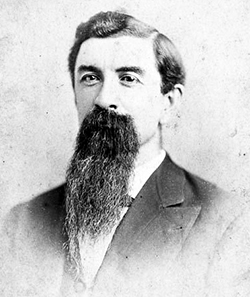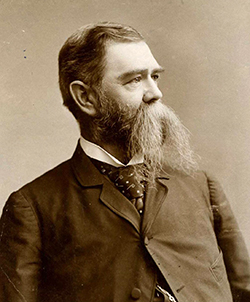See also: Farmers' Alliance.

The North Carolina Farmers' Association evolved out of two meetings, the first of which took place in Raleigh on 18 Jan. 1887. Creation of the organization was inspired by a network of farmers' clubs organized under the leadership of Leonidas L. Polk, editor of the agrarian newspaper the Progressive Farmer. These clubs were for farmers with a desire to improve their conditions, especially through industrial education. The Morrill Land Grant Act of 1862 had donated public lands or land scrip to the states for education in agriculture and mechanical arts. North Carolina's land scrip fund, with an annual interest of $7,500, was awarded to the University of North Carolina, and its president, Kemp Plummer Battle, wanted to retain the funding. Polk and other agrarian leaders saw the need to establish an agricultural college.
Governor Alfred Moore Scales, an ally of Battle, invited the farmers to meet with the Board of Agriculture in Raleigh on the night of 18 Jan. 1887. Polk regarded this invitation as an attempt to sabotage the organizational efforts of farmers, who had already scheduled a mass meeting in Greensboro on the following day. Some farmers attended the meeting with the Board of Agriculture and forced the adoption of two resolutions. The first advocated creation of an agricultural college; the second demanded reorganization of the Department of Agriculture so as to place it under the control of practical farmers. Both resolutions were adopted.

The mass meeting was rescheduled and held in Raleigh on 26 Jan. 1887, with 243 delegates in attendance. Called to order by Polk, the delegates drew up a constitution that established the North Carolina Farmers' Association. It provided for a president, one vice president from each congressional district, a secretary, assistant secretaries, a treasurer, and an executive committee of five, all to be elected at the regular annual meeting for one-year terms. The constitution authorized the president to appoint standing committees of five on several matters, including industrial education, commercial fertilizers, and crop rotation. The delegates elected Elias Carr, an Edgecombe County planter, as president of the association.
The convention petitioned the legislature to establish an agricultural college, to which would be transferred the land scrip fund authorized by the Morrill Act. A second resolution demanded that the Department of Agriculture direct the college and be placed under the control of practical farmers and relieved of nonagricultural functions, such as immigration activities. The president was authorized to appoint a committee to lobby for the enactment of the resolutions and to formulate a plan for the college. Primarily concerned about industrial education, the delegates nevertheless pressed for other demands, such as the repeal of crop lien laws and the employment of convict labor on public roads in lieu of its lease to corporations. The philosophy of the order emphasized the farmer's individual responsibility for his success; nevertheless, it mobilized farmers for political action to achieve moderate goals.
A bill passed the legislature in March 1887 to establish the North Carolina College of Agriculture and Mechanic Arts. The institution would receive funding from the land scrip fund, grants from the Department of Agriculture, labor from the penitentiary, and private gifts of land. The Hatch Act passed by Congress in March 1887 authorized a federal grant of about $5,000 to help fund the college. Passage of the agricultural college bill was the outstanding achievement of the association.
The second meeting of the organization was held in Greensboro in January 1888 with more than 200 delegates in attendance. Carr and other incumbents were reelected. The delegates endorsed establishment of the agricultural college and again demanded reform of the Department of Agriculture. Committee reports were made on such subjects as drainage, crop rotation, use of improved seeds, stock breeding, and public roads. A farmers' institute was conducted during two days of the session. The body agreed to receive a delegation from the Farmers' Alliance, an organization that spread from Texas to North Carolina, in April 1887. The delegation explained the purposes of the order. The assemblage passed a resolution to "commend" the Farmers' Alliance to the public. The association agreed to meet in Raleigh one year later. That meeting never took place. The organization merged with the Farmers' Alliance in spite of some objection by executive committee members.